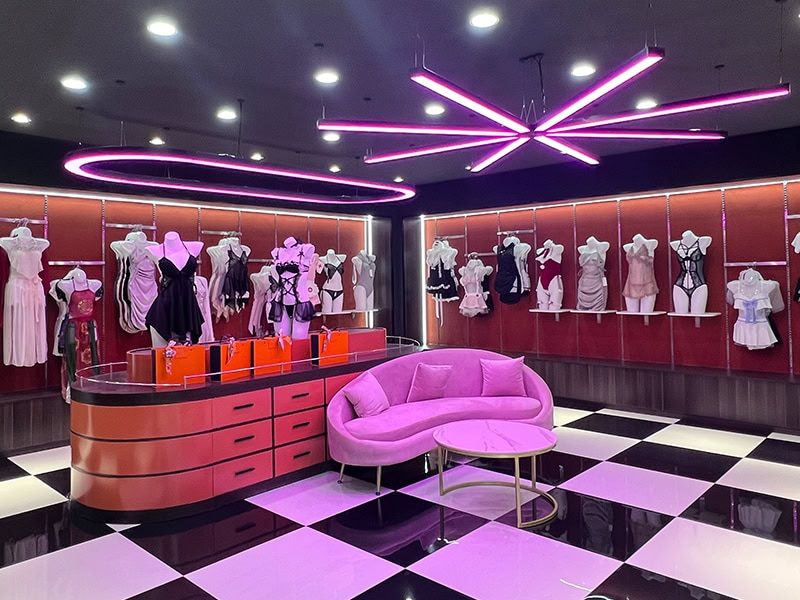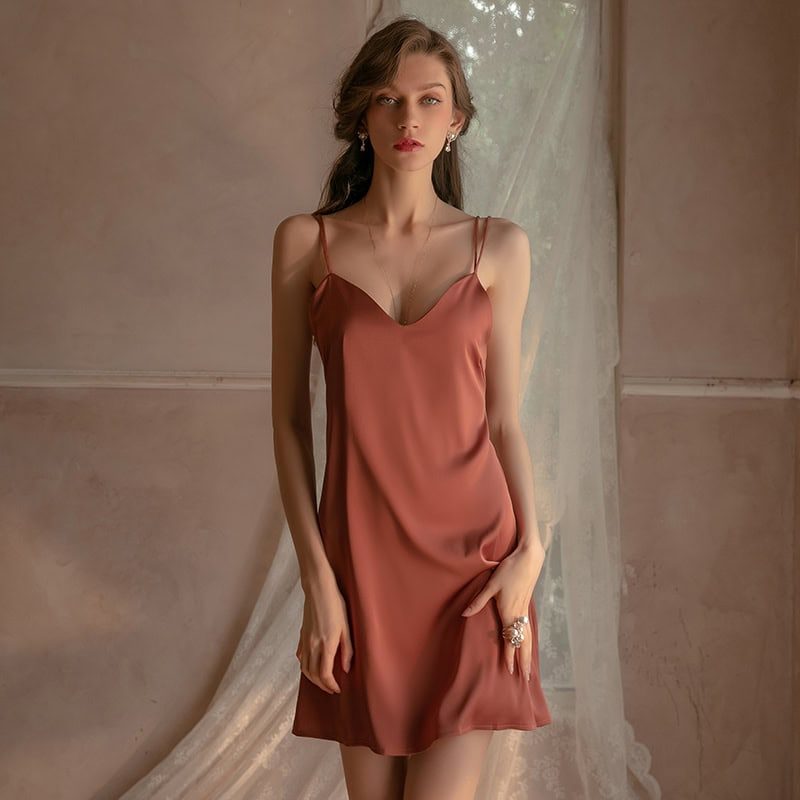Introduction
Pajamas have long been a staple in women’s wardrobes, but their journey from functional nightwear to fashionable loungewear is a fascinating one. What began as simple sleep attire has transformed into a reflection of personal style and luxury. This blog explores the evolution of women’s pajamas, the materials and designs that shaped their history, and how they’ve become an essential part of both comfort and fashion today.
Early Origins: Pajamas as a Functional Necessity
Pajamas, as we know them today, didn’t always exist. In fact, the concept of designated sleepwear is relatively modern. Historically, sleepwear was basic and served purely functional purposes, typically made from simple fabrics designed to cover and protect the body during sleep.
- The Middle Ages and Modesty: During the Middle Ages, women typically wore long, loose-fitting nightgowns or shifts, often made from linen or wool. These garments provided warmth and modesty, but there was little focus on comfort or style.
- 18th and 19th Century Sleepwear: By the 18th century, nightwear began to evolve slightly with more delicate materials like cotton becoming popular among wealthier women. The idea of nighttime fashion wasn’t yet prominent, but there was more attention to detail in craftsmanship and material selection.
During this period, sleepwear was more about utility and keeping warm, with no clear division between what was worn to bed and what was worn during the day in private.
The 1920s: Pajamas Enter the Fashion Scene
The 1920s marked a significant shift in women’s fashion, and pajamas were no exception. The roaring ’20s brought about new freedoms in women’s clothing, with looser silhouettes and more daring designs coming into vogue. Pajamas were no longer just utilitarian; they became a statement of modernity and liberation.
- Pajama Sets for the Modern Woman: Women began wearing two-piece pajama sets, consisting of pants and a top. This was a revolutionary shift, as pants had traditionally been reserved for men. The design allowed for greater freedom of movement and comfort, reflecting the changing role of women in society.
- Luxurious Fabrics: During this time, silk and satin became popular materials for women’s pajamas, adding a touch of elegance and luxury. These fabrics draped beautifully on the body, making pajamas not only functional but also fashionable.
- The Influence of Hollywood: As the film industry boomed, glamorous movie stars began appearing in chic sleepwear on-screen, influencing popular fashion. Pajamas became a symbol of luxury and sophistication, and women began to invest in stylish sleepwear for both comfort and elegance.
The 1950s and 60s: A Focus on Femininity and Style
The post-war era of the 1950s and 60s brought about a renewed focus on femininity, with sleepwear becoming more form-fitting and decorative. Women’s pajamas reflected the era’s focus on domesticity and glamour at home.
- Flattering Silhouettes: During this time, nightgowns and pajamas featured more fitted designs, often emphasizing the waist. Ruffles, lace, and decorative trims became common elements, giving sleepwear a distinctly feminine feel.
- Matching Sets: Pajamas started to include matching sets that coordinated with robes or slippers, creating a polished and cohesive look even for at-home attire.
- The Rise of Baby Dolls: The “baby doll” style of pajamas, which featured short nightgowns with a playful, youthful design, became a popular choice for women who wanted a balance of comfort and flirtatiousness.
The pajama became an essential part of a woman’s home wardrobe, reflecting both comfort and an idealized image of femininity.
The 1970s and 80s: Loungewear Meets Leisurewear
The 1970s and 80s marked a time of greater experimentation with fashion, and sleepwear followed suit. As society embraced a more casual approach to clothing, the line between loungewear and sleepwear began to blur.
- Comfort as a Priority: While fashion remained important, comfort became a key focus during these decades. Soft cotton, fleece, and jersey fabrics became popular choices, offering relaxed, comfortable options for both lounging and sleeping.
- Mixing Sleepwear with Daywear: Women began mixing sleepwear elements like pajama tops or robes with daywear, reflecting a growing trend of leisurewear. This era saw the rise of oversized sleep shirts, which became fashionable both inside and outside the home.
- Bold Patterns and Colors: The bold aesthetic of the 70s and 80s was reflected in sleepwear designs. Bright colors, bold patterns, and playful prints became common, allowing women to express their personal style even in their choice of pajamas.
The 1990s and 2000s: Pajamas as a Fashion Statement
By the 1990s and 2000s, pajamas had firmly established themselves as a versatile and essential part of women’s wardrobes. Sleepwear was no longer just for bedtime—it was now a fashion statement in its own right.
- Designer Sleepwear: Many luxury designers began offering high-end sleepwear collections, blending comfort with couture. Silk camisoles, lace-trimmed pajama sets, and elegant nightgowns became must-have items for women who wanted to bring a touch of luxury to their sleep routine.
- Pajamas as Loungewear: The rise of the “stay-at-home” culture in the 2000s, fueled by the internet and remote work, saw a boom in loungewear. Pajamas were no longer just for sleeping—they became fashionable for lounging around the house and even casual outings.
- The Influence of Celebrities and Fashion Icons: Celebrities, influencers, and fashion magazines increasingly showcased sleepwear as part of everyday fashion. Designers introduced pajama-style trousers and silk blouses into mainstream fashion, further blurring the lines between sleepwear and daywear.
Today: Pajamas as a Reflection of Lifestyle and Sustainability
In recent years, the demand for high-quality, stylish sleepwear has continued to rise. Women’s pajamas have evolved into a symbol of self-care and lifestyle, reflecting both personal values and fashion preferences.
- Sustainability in Sleepwear: With a growing focus on sustainability, many sleepwear brands have shifted towards eco-friendly materials like organic cotton, bamboo, and recycled fabrics. These materials offer the same level of comfort while reducing environmental impact, making sustainability a priority for today’s consumers.
- Comfort-Driven Fashion: As remote work and the “work-from-home” culture continue to expand, pajamas have found their place in daily life. Women are looking for pajamas that are not only comfortable but also stylish enough to be worn throughout the day.
- Customization and Personalization: Today’s pajamas can be personalized with monograms or custom designs, making them a popular gift option. Custom pajama sets allow women to express their individuality and sense of style, even when it comes to sleepwear.
Conclusion
From their origins as simple, functional garments to their status as fashionable and luxurious loungewear, women’s pajamas have come a long way. The evolution of sleepwear reflects broader societal changes, from the liberation of women’s fashion to the growing emphasis on comfort and sustainability. Today, pajamas are more than just a necessity—they are a reflection of personal style, self-care, and a commitment to quality and comfort. At our factory, we are proud to be part of this journey, creating high-quality women’s pajamas that combine fashion, comfort, and sustainability for the modern woman.
This blog topic can attract readers interested in fashion history, current trends, and the rise of sustainable sleepwear while also showcasing your factory’s expertise in producing high-quality women’s pajamas.






